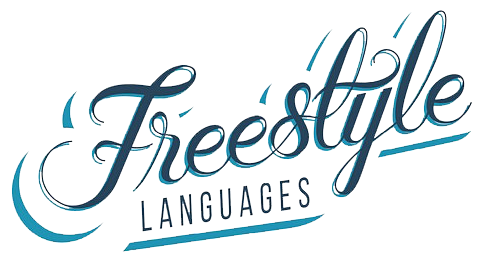Jessica Jacob, Spanish and English Instructor
Spanish Filler words
For the last two months, my husband and I have been traveling Mexico in an attempt to reconnect with my Mexican roots while exploring Mexico's rich cultural, artistic and geographical features. Not only has it been extremely gratifying to see my extended family after 20 years, but I have also become reacquainted with the local Spanish of my paisanos versus the formal castellano Spanish that I have been studying, using and teaching. One such reacquaintance that I have become particularly aware of is the everyday use of filler words.

Empty space, drag to resize
Every language has a natural need for filler words. They provide speakers with time to process information and gather thoughts. These words may also come out when we find ourselves nervous, fluttered or distracted while engaging in dialogue or presentations, or they may naturally become embedded in our typical language as a result of changing language trends. Filler words become second nature and using them authentically helps to persuade others of one's fluency.
Empty space, drag to resize
In the US, we're quite familiar with the ever so popular "um" and "uh" that easily and unobtrusively sneak their way in between our words and sentences, as do "and", "and such", "right", "so", and many others.
But how do we do this in Spanish? Well, my English speaking husband recently caught me repeating the word este and asked me what it meant and why I and others here in Mexico use it so much. I hadn't realized that I had been using this word so much, but in doing so, I ironically started to feel more like a local.
But how do we do this in Spanish? Well, my English speaking husband recently caught me repeating the word este and asked me what it meant and why I and others here in Mexico use it so much. I hadn't realized that I had been using this word so much, but in doing so, I ironically started to feel more like a local.
Empty space, drag to resize
Some common filler words, or muletillas
Spanish
English equivalent
este
um, uh
a ver
let's see
bueno
good
entonces
then, so
pues
so, well
sabes lo que te digo
you know what I mean?
Click below to listen and repeat
Empty space, drag to resize
In another fun twist, I recently overheard two younger Mexican girls conversing in Spanish and pulling off the English word "so" as their choice filler word (with a strong Spanish pronunciation).
Nonetheless, whichever filler word you choose to adopt, knowing how and when to use it will definitely not only help you fit right in among the locals, but it will buy you that little bit of extra time to gather your thoughts while you speak their language.
Nonetheless, whichever filler word you choose to adopt, knowing how and when to use it will definitely not only help you fit right in among the locals, but it will buy you that little bit of extra time to gather your thoughts while you speak their language.
Do you want to sound more like a local when speaking or traveling?
Check out the Spanish pronunciation workshop and build your confidence.
Check out the Spanish pronunciation workshop and build your confidence.
Interested in learning Spanish?
Team Freestyle is here to guide you every step of the way.
We have private classes, Conversation Cafés , and free events.
Take the 5 min placement quiz and get started today!
Take the 5 min placement quiz and get started today!
About the Author: Jessica Jacob
Originally from Guadalajara, Mexico, Jessica speaks Spanish as her first language. As her family immigrated to the United States when she was five years old, she acquired English through an ESL program, developing a fascination for languages and cultures from a young age. This appeal led her to pursue French as a third language. Upon receiving her B.A. in Spanish Language, Literature and Culture, with a minor in French in 2008, Jessica enrolled in a Study-Abroad program in Angers, France, that transformed her life and inspired a love for travel and human connection.
Learn more.
Originally from Guadalajara, Mexico, Jessica speaks Spanish as her first language. As her family immigrated to the United States when she was five years old, she acquired English through an ESL program, developing a fascination for languages and cultures from a young age. This appeal led her to pursue French as a third language. Upon receiving her B.A. in Spanish Language, Literature and Culture, with a minor in French in 2008, Jessica enrolled in a Study-Abroad program in Angers, France, that transformed her life and inspired a love for travel and human connection.
Learn more.
Freestyle Languages
Language learning your way.
